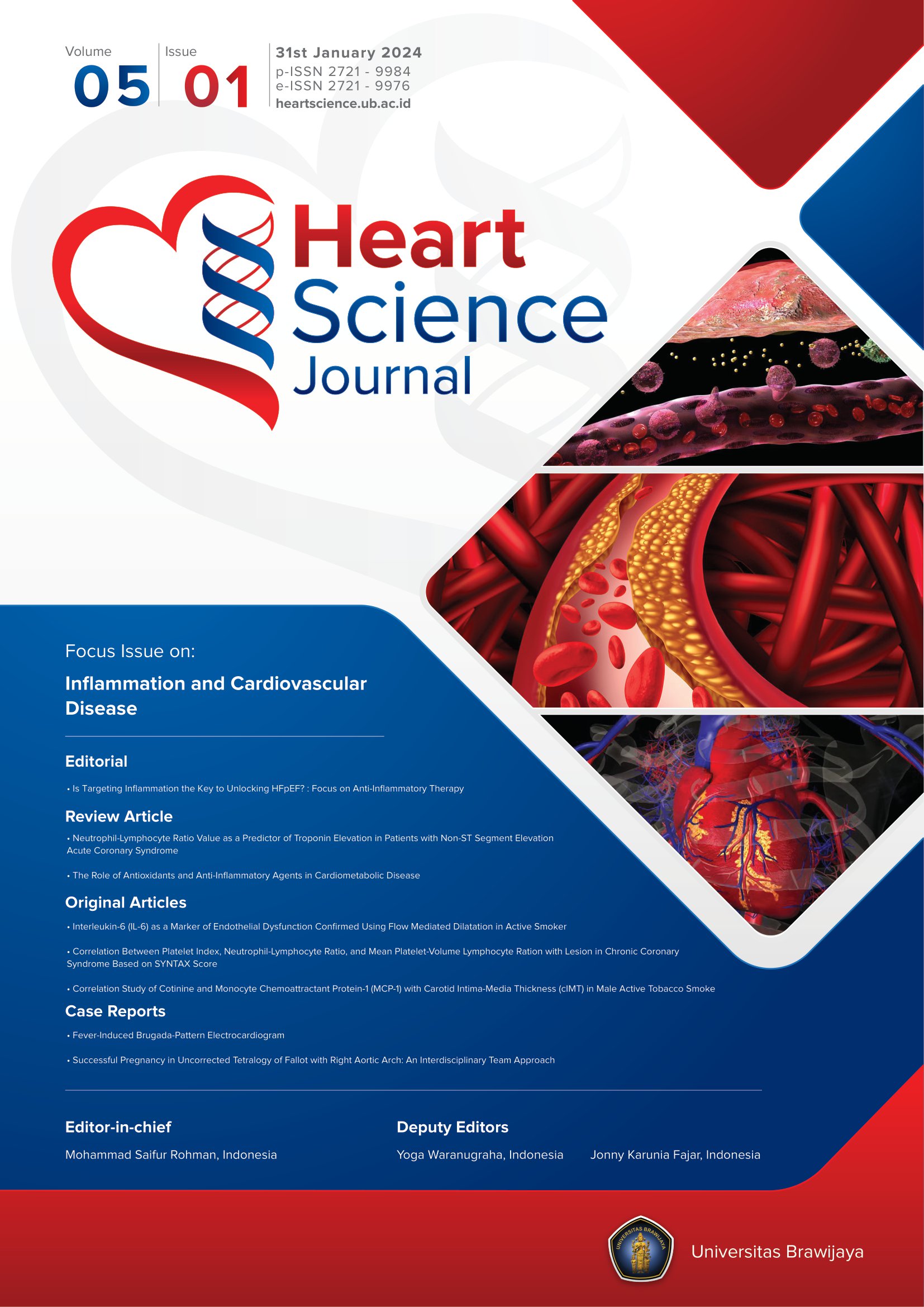Correlation Between Jakarta Cardiovascular Score and Coronary Artery Calcium Score in High-Risk Women at Siloam Hospital Surabaya, Indonesia, 2020-2021.
Abstract
Background: Coronary Artery Calcium Score (CAC) is an indicator of atherosclerosis and could be used as a reliable noninvasive assessment of coronary artery disease. The Jakarta Cardiovascular Assessment (JAKVAS) is a modified Framingham risk score based on the Indonesian population targeted for developing countries. This study was aimed todetermine the correlation between Jakarta Cardiovascular Score and Coronary Artery Calcium Score in High-Risk Women in Surabaya, Indonesia, in 2020-2021. Method: This study was a retrospective study looking for a correlation between JAKVAS and CAC, with data taken from the medical records of Siloam Hospital Surabaya from 2020-2021. Result: The association between JAKVAS and CAC risk stratification was significant (P < 0.05). Conclusion: Theabsence of CAC is related to a lower risk of cardiovascular events (JAKVAS) than CAC > 0 in high-risk women.
Keywords
Full Text:
PDFReferences
Demer LL, Tintut Y. Vascular calcification: Pathobiology of a multifaceted disease. Circulation. 2008;117(22):2938–48.
Greenland P, Blaha MJ, Budoff MJ, Erbel R, Watson KE. Coronary Calcium Score and Cardiovascular Risk. J Am Coll Cardiol. 2018;72(4):434–47.
Kusmana D. The influence of smoking cessation, regular physical exercise and/or physical activity on survival: A 13 years cohort study of the Indonesian population in Jakarta. Medical Journal of Indonesia. 2002;11(4):230.
Heo SY, Park NH, Park CS, Seong SO. Relationship between Framingham Risk Score and Coronary Artery Calcium Score in Asymptomatic Korean Individuals. Journal of the Korean Society of Radiology. 2016;74(2):75–81.
Neves PO, Andrade J, Monção H. Coronary artery calcium score: current status. Radiol Bras. 2017;50(3):182–9.
Mohan J, Bhatti K, Tawney A, Zeltser R. Coronary Artery Calcification. StatPearls [Internet]. 2022 May 2 [cited 2022 Oct 12]; Available from: https://www.ncbi.nlm.nih.gov/books/NBK519037/
Shreya D, Zamora DI, Patel GS, Grossmann I, Rodriguez K, Soni M, et al. Coronary Artery Calcium Score - A Reliable Indicator of Coronary Artery Disease? Cureus. 2021;13(12):e20149.
Dhingra R, Vasan RS. Age As a Risk Factor. Medical Clinics of North America. 2012;96(1):87–91.
Klop B, Elte JWF, Cabezas MC. Dyslipidemia in Obesity: Mechanisms and Potential Targets. Vol. 5, Nutrients. 2013. p. 1218–40.
Chen NX, Duan D, O’Neill KD, Moe SM. High glucose increases the expression of Cbfa1 and BMP-2 and enhances the calcification of vascular smooth muscle cells. Nephrology Dialysis Transplantation. 2006;21(12):3435–42.
Boström KI, Jumabay M, Matveyenko A, Nicholas SB, Yao Y. Activation of vascular bone morphogenetic protein signaling in diabetes mellitus. Circ Res. 2011;108(4):446–57.
Chen NX, Moe SM. Vascular calcification: Pathophysiology and risk factors. Curr Hypertens Rep. 2012;14(3):228–37.
Bishop FK, Maahs DM, Snell-Bergeon JK, Ogden LG, Kinney GL, Rewers M. Lifestyle risk factors for atherosclerosis in adults with type 1 diabetes. Diab Vasc Dis Res. 2009 Sep 17;6(4):269–75.
Ahmed HM, Blaha MJ, Nasir K, Rivera JJ, Blumenthal RS. Effects of physical activity on cardiovascular disease. American Journal of Cardiology. 2012 Jan 15;109(2):288–95.
DOI: https://doi.org/10.21776/ub.hsj.2023.004.02.3
Refbacks
- There are currently no refbacks.
Copyright (c) 2023 Imam Mi'raj Suprayoga, Saskia Dyah Handari

This work is licensed under a Creative Commons Attribution 4.0 International License.









